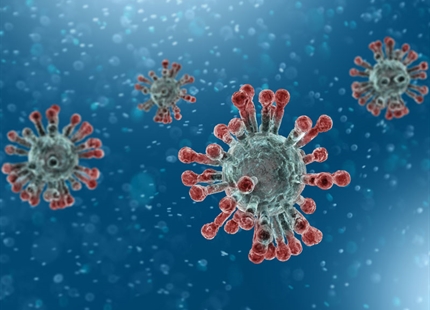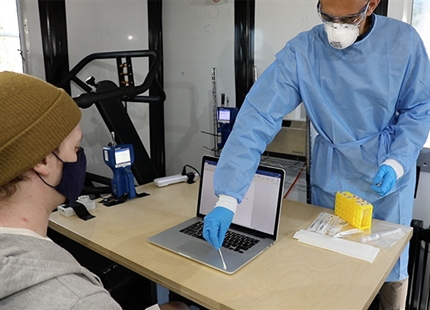Published: 27/02/13 | PLoS One. 2013; 8 (2):e57485
High humidity leads to loss of infectious influenza virus from simulated coughs
John D. Noti, Francoise M. Blachere, Cynthia M. McMillen, William G. Lindsley, Michael L. Kashon, Denzil R. Slaughter, Donald H. Beezhold
Method
Nebulized influenza was coughed into the examination room and Bioaerosol samplers collected size-fractionated aerosols (<1 µM, 1–4 µM, and >4 µM aerodynamic diameters) adjacent to the breathing manikin’s mouth and also at other locations within the room. At constant temperature, the RH was varied from 7–73% and infectivity was assessed by the viral plaque assay.
Results
Total virus collected for 60 minutes retained 70.6–77.3% infectivity at relative humidity ≤23% but only 14.6–22.2% at relative humidity ≥43%. Analysis of the individual aerosol fractions showed a similar loss in infectivity among the fractions. Time interval analysis showed that most of the loss in infectivity within each aerosol fraction occurred 0–15 minutes after coughing. Thereafter, losses in infectivity continued up to 5 hours after coughing, however, the rate of decline at 45% relative humidity was not statistically different than that at 20% regardless of the aerosol fraction analyzed.
Conclusion
At low relative humidity, influenza retains maximal infectivity. Inactivation of the virus at higher relative humidity occurs rapidly after coughing. Although virus carried on aerosol particles <4 µM have the potential for remaining suspended in air currents longer and traveling further distances than those on larger particles, their rapid inactivation at high humidity tempers this concern. Maintaining indoor relative humidity >40% will significantly reduce the infectivity of aerosolized virus.
Scientific studies main menuDry air and airborne infection
Low humidity acts as a conduit for viruses and airborne bacteria to disperse and travel around a building and threaten all occupants.
Read moreDry air and our airway defence system
Low humidity dries our mucous membranes and inhibits our body's natural defence against airborne germs, viruses and bacteria.
Read moreDry air and our eyes
Low humidity dries our eyes' precorneal tear film making us prone to eye irritations and contact lens discomfort.
Read moreDry air and our skin
Low humidity dries the outer layer of our skin leading to itchiness, cracking and dermatological problems.
Read moreHumidity fights flu
A humidity of 40-60%RH is scientifically proven to quickly inactivate airborne flu and is the ideal indoor humidity level.
Read moreMy humidity is low, what should I do?
If your workplace humidity is consistently below 40%RH it could be affecting your health. Here's what you can do about it.
Read more




















